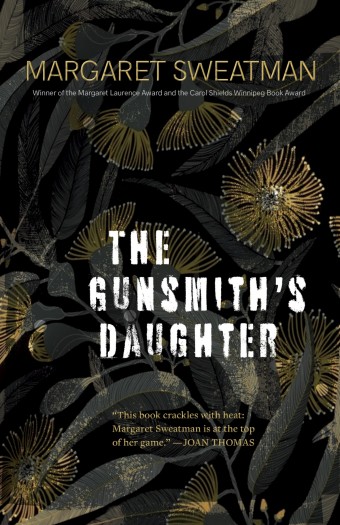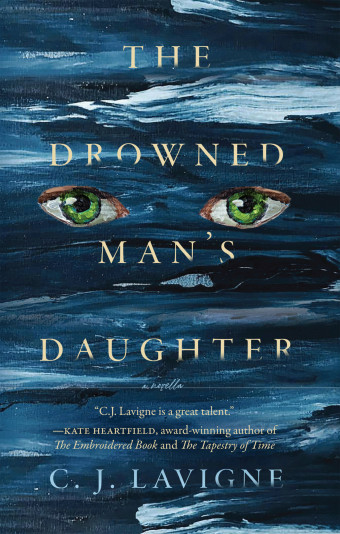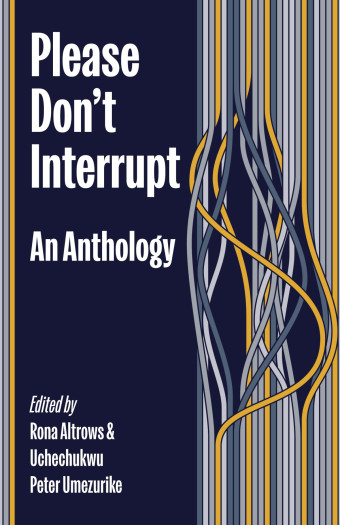Margaret Sweatman is a force of nature. The Winnipeg-based writer is an essayist, poet, playwright, musician, and songwriter who received a Genie award for a song she co-wrote with Glenn Buhr. Her fiction has also won many awards, including the Rogers Writers’ Trust, the McNally Robinson Book of the Year, and the Sunburst awards. The Gunsmith’s Daughter is her sixth novel.

- Gunsmith’s Daughter
- Margaret Sweatman
- Goose Lane Editions
- $24.95 Paperback, 296 pages
- ISBN: 978-17-73102-39-9
The story begins in September 1971. Eighteen-year-old Lilac Welsh has finished school, and is enjoying the summer isolated with her parents at Rough Rock on the Winnipeg River. Their palatial home has been bought with money from her father’s invention, the Welsh Model 70 hunting rifle. Her mother, Ruby, is disturbed by Kal’s latest brainchild – the Welsh Stalker Model 80 assault rifle, capable of bringing down a “multi-million-dollar jet with a two-dollar bullet.”
Songs of the era form a soundtrack to the book, Sweatman says. “The novel’s very first research impulse began with a return to the 1960s and ’70s, when I was stumbling towards adulthood. That music – the songs recorded by the Animals and by Jimi Hendrix, and the satiric, subdued fury of Country Joe McDonald – vivifies cynicism. We experienced not merely a generation gap but a breach.”
There is a cinematic quality to The Gunsmith’s Daughter. “I’m working on a play right now, and the script is based in sound and rhythm, like music, whereas when I’m writing a story, it’s visual and scenic. Writing a novel is one long hallucination,” Sweatman says.
Gavin, a catalyst to the action, travels from Thunder Bay to meet his hero Kal before enlisting for the war in Vietnam. His arrival unsettles Lilac, and makes her realize that she needs to get away from the burden of her overbearing father’s love. And she needs to better understand him.
“Those who design anti-personnel weapons,” says Sweatman, “are serial killers. That kind of righteous psychopathy, that narcissism, can really drive a story. But Kal needs love, and so it’s impossible for Lilac to disengage from him.” Lilac moves to Winnipeg, and finds a job at the Winnipeg Tribune.

But there is more to the world than Winnipeg. Young women from Australia and England are going to Vietnam as war correspondents. Lilac manages to join their ranks.
She is not prepared for Vietnam. Fortunately she has a mentor, a seasoned photojournalist, Larry Donovan. Larry has an agenda – he wants to interview the famous Kal Welsh, weapon maker. He will have his opportunity as Kal arrives in Saigon, ostensibly to make sure Lilac is all right, but also to show the Stalker to the Vietnamese government.
It becomes clear that the weapon is an obsession.
The Gunsmith’s Daughter is a visceral read – the sights and violence of the Vietnam War are difficult to process, for both Lilac and the reader. But there is much to ponder. Throughout The Gunsmith’s Daughter, readers face the betrayals that make the lucrative weapons industry possible.
Sweatman says, about the difficulty of doing the research, “I guess I enter the material because it’s so strange and unknowable. That’s what horror is. We’re watching it daily now in Ukraine. I don’t know how reporters have the stamina to witness war first-hand, and greatly admire them, from my sanctuary.”













